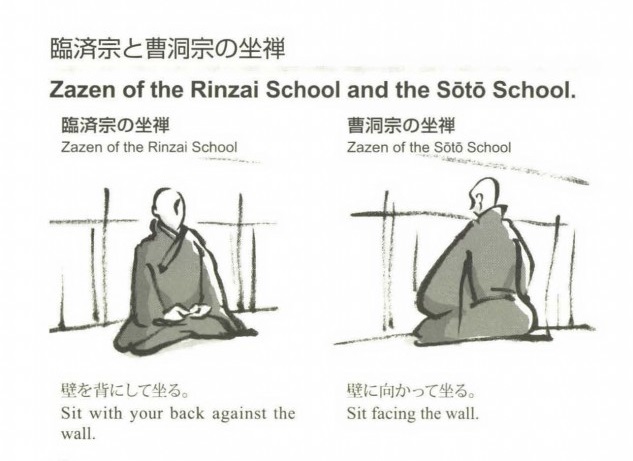
Many people find it difficult to sit still and meditate daily. Practicing this practice can help people deal with stress and maintain mental clarity. Regular meditation can actually change the brain, according to research. The brain can be changed by meditation that focuses on present awareness. Scientists have proven that meditation can enhance the quality and happiness of one's daily life. This article will discuss the many benefits of meditation.
Whether you meditate for just a few minutes or an hour, it's important to start small and build up over time. You can start by focusing on small, manageable time blocks. Keep in mind that everyone has a unique sweet spot for meditation. Finding the right amount of time is the most important part. It is very easy to do it from home. This will help you stay motivated for a long time. Use a timer to remind you to practice daily.

Developing a meditation practice can be a lifelong practice if you take it seriously. Meditation can help improve your awareness of your thoughts, feelings and emotions. Start small so beginners can build their practice. Everyone's sweet spot is different. The most important thing is to enjoy the time you have.
Your meditation time should be scheduled. People are more task-oriented and have more to do. Setting a time for your meditation is a great way to make sure that you have some quiet time every day. Schedule your daily meditation so you can practice it uninterrupted. During this time, you can relax and decompress. If you feel tired, you can relax and decompress during this time. You will wake up feeling refreshed to face the day.
You should practice meditation every day. Meditation can increase your mental clarity, and overall health. Meditation can help you achieve your goals. It is important to be aware and present in your environment. Your mind is constantly busy and is constantly absorbing new information. Mindfulness is the key to meditation. Meditation will help you to have a clearer view of yourself and become more aware of the world around you.

Meditation is best done in a comfortable position. Meditation is best done in a comfortable posture, such as laying on your back, kneeling, or with your legs crossed. The key is to find a position that makes you feel comfortable. Depending on the day, you may prefer sitting in one position or standing on your hands. As it can cause discomfort, a chair and/or a bench are not recommended.
FAQ
Is cold a sign of a weak immune response?
Cold can make you less immune to infection because your body makes fewer white blood cells, which are essential for fighting infections. Being cold can make you feel more comfortable because your brain releases endorphins which help reduce pain.
Which diet is best for me?
Your lifestyle and individual needs will determine the best diet for your body. You should also consider how much energy your exercise consumes, whether you like low-calorie or high-calorie foods, and what you enjoy in terms of eating fruits and veggies.
Intermittent fasting might be an option for you if your goal is to lose weight. Intermittent fasting is a way to eat only certain meals during the day instead of three large meals. This method may work better than traditional diets which include daily calorie counts.
Research suggests that intermittent fasting may increase insulin sensitivity and lower inflammation. This can result in a reduction in blood sugar levels and a reduced risk of developing diabetes. Intermittent fasting has been shown to promote fat loss as well as improve overall body composition.
How do I know what's good for me?
Your body is your best friend. Your body knows best when it comes to how much exercise, food, and rest you need. You need to be aware of your body and not overdo it. Listen to your body and make sure you're doing everything you can to stay healthy.
How do you measure body fat?
A Body Fat Analyzer can be used to measure body fat. These devices can be used to measure body fat percentages in people who are trying to lose weight.
What's the difference between a virus & a bacterium?
A virus is a microscopic organism that cannot reproduce outside its host cell. A bacterium is a single-celled organism that reproduces by splitting itself in two. Viruses measure only 20 nanometers in diameter, but bacteria is up to 1 millimeter in size.
Viruses are often spread through contact of infected bodily fluids like saliva, urine or semen. Bacteria are usually spread through direct contact with contaminated objects or surfaces.
Viral infections can be transmitted through skin cuts, scrapes and bites. They may also get into the body through the nose and mouth, eyes, ears or rectum.
Bacteria can enter our bodies through wounds, cuts, scrapes, burns, insect stings, or other breaks in our skin. They can also get into our bodies via food, water or soil.
Both viruses and bacteria can cause illness. However, viruses cannot reproduce within their hosts. They only cause disease when they infect living tissue.
Bacteria can cause illness by multiplying in the body. They can infiltrate other parts of the body. To kill them, we must use antibiotics.
What's the problem with BMI?
BMI stands to Body Mass Index. It is a measurement of body weight based on height. Here is how to calculate BMI using the following formula.
Divide the weight in kilograms by the height in meters squared.
The result can be expressed as a number between zero and 25. A score of 18.5 or higher indicates overweight, while a score of 23 or higher indicates obesity.
A person who is 100 kg in weight and 1.75m in height will have a 22 BMI.
Statistics
- WHO recommends reducing saturated fats to less than 10% of total energy intake; reducing trans-fats to less than 1% of total energy intake; and replacing both saturated fats and trans-fats to unsaturated fats. (who.int)
- WHO recommends consuming less than 5% of total energy intake for additional health benefits. (who.int)
- nutrients.[17]X Research sourceWhole grains to try include: 100% whole wheat pasta and bread, brown rice, whole grain oats, farro, millet, quinoa, and barley. (wikihow.com)
- According to the 2020 Dietary Guidelines for Americans, a balanced diet high in fruits and vegetables, lean protein, low-fat dairy and whole grains is needed for optimal energy. (mayoclinichealthsystem.org)
External Links
How To
What does "vitamin" actually mean?
Vitamins are organic compounds found naturally in food. Vitamins allow us to absorb nutrients from food. Vitamins cannot be made by the body; they must be taken from food.
Two types of vitamins exist: water-soluble vitamin and fat-soluble vitamin. Water-soluble vitamins dissolve quickly in water. Some examples include vitamin C,B1 and B2 vitamins (thiamine), B2 and riboflavin, B3 and B6 vitamins (niacin), folic acids, biotin, pantothenic acids, and cholesterol. The liver and fatty tissues are home to fat-soluble vitamins. Some examples include vitamin D and E, K, A and beta carotene.
Vitamins are classified according their biological activity. There are eight main groups of vitamins.
-
A - Vital for normal growth and maintaining good health.
-
C is important for nerve function and energy production.
-
D - Vital for healthy bones and teeth
-
E is needed for good reproduction and vision.
-
K - Required for healthy nerves and muscles.
-
P – vital for building strong bones.
-
Q - aids digestion, absorption and absorption iron
-
R – Required for the formation of red blood vessels.
The recommended daily allowance (RDA) of vitamins varies depending on age, gender, and physical condition. RDA values are set by the U.S. Food and Drug Administration (FDA).
For adults aged 19 and older, the RDA for vitamin B is 400 micrograms daily. Because it is essential for the development of the fetus, pregnant women should consume 600 micrograms per daily. Children ages 1-8 require 900 micrograms per day. Babies under one-year old require 700 mg per day. Between 9 and 12 years of age, however, this drops to 500 mg per day.
Children aged between 1-18 years require 800 micrograms of sugar per day, while overweight children need 1000 micrograms. Children who are underweight receive 1200 micrograms every day to meet their nutritional requirements.
Children aged 4-8 years old who have been diagnosed as having anemia require 2200 micrograms of vitamin C per day.
2000 micrograms is the minimum daily intake for adults over 50 years old to maintain good health. Because of their higher nutrient needs, women who are pregnant or nursing need 3000 mg per day.
1500 micrograms is the recommended daily intake for adults aged 70+, who lose approximately 10% of muscle each year.
Women who are pregnant, nursing or breastfeeding need more than the RDA. Pregnant mothers need 4000 micrograms per daily during pregnancy and 2500 after giving birth. Breastfeeding mothers need to consume 5000 micrograms every day when breastmilk has been produced.